A temperature blanket is a cozy project where you crochet the daily temperature following a color scale - one row per day. Read everything you need to know about this fun project right here.
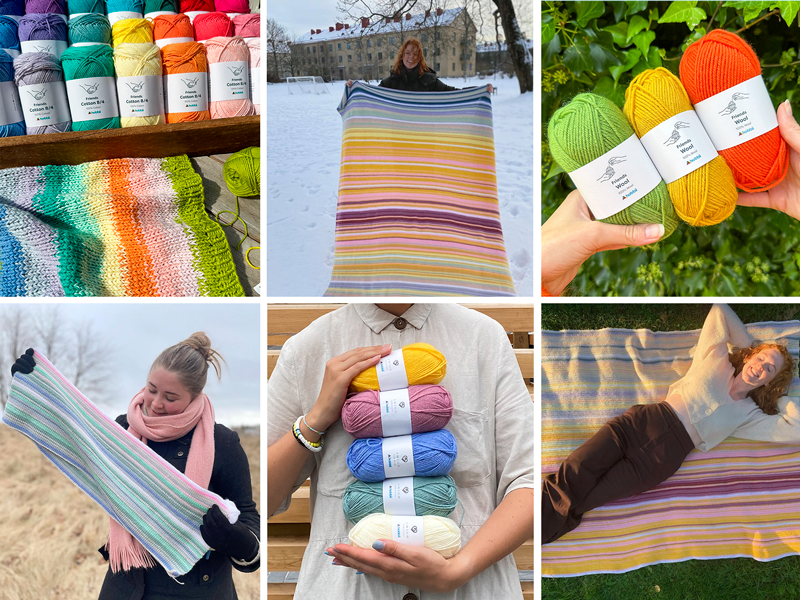
1. With more than 100 colors to choose from, Friends Cotton 8/4 is the ideal cotton yarn for crafting a temperature blanket! 🌈 2. Picture from @temperatureblanket.2023 / @emmy_knits. ❄️ 3. If wool is your preference, consider creating a temperature blanket with Friends Wool for a cozy option. 😍 4. Picture from @temperatureblanket.2023 / @emmy_knits. 💜 5. Craft a delightful temperature blanket using Amigo (100% HB acrylic yarn) for a soft and durable finish. 🧶 6. Soon, you'll find yourself enjoying your blanket even as you continue to crochet it! Photo via @temperatureblanket.2023 / @emmy_knits. 📸
Crocheted blankets are as popular as ever. Few things in life are cozier than cuddling up under a soft blanket - and the joy is even greater when you crocheted said blanket with your own hands. It’s a special feeling, don’t you agree?
And if you’re not intimidated by large crochet projects (because, let’s be honest, a crocheted blanket takes HOURS!), then we have a fun suggestion for your next blanket. A temperature blanket!
You may have already seen these gorgeous temperature blankets on social media. The colorful blankets are extremely popular, and their popularity only increases in January each year as we take the first few steps into the new year.
In this blog post, you will find everything you need to know about temperature blankets. Grab your crochet hook - and let the crocheting begin!
What Is a Temperature Blanket?
A temperature blanket is a project where you - over the course of an entire calendar year - crochet rows using colors corresponding to the changing temperature of the seasons until you have a completed blanket. Each day, you crochet a new row (or a section each week) according to a color scale you planned in advance.
The idea is to crochet a blanket that showcases the changing temperatures throughout the year. That way, the blanket tells a visual story. At the end of the year, your blanket will be an amazing reminder of the year that just passed.
Even though the new year is already well underway, you don’t have to stress about not having started your temperature blanket just yet. After all, you’re in charge of when you want to start your project - and why shouldn’t June be as good a time as January? You might even have a good reason to start your blanket on a specific date or month.
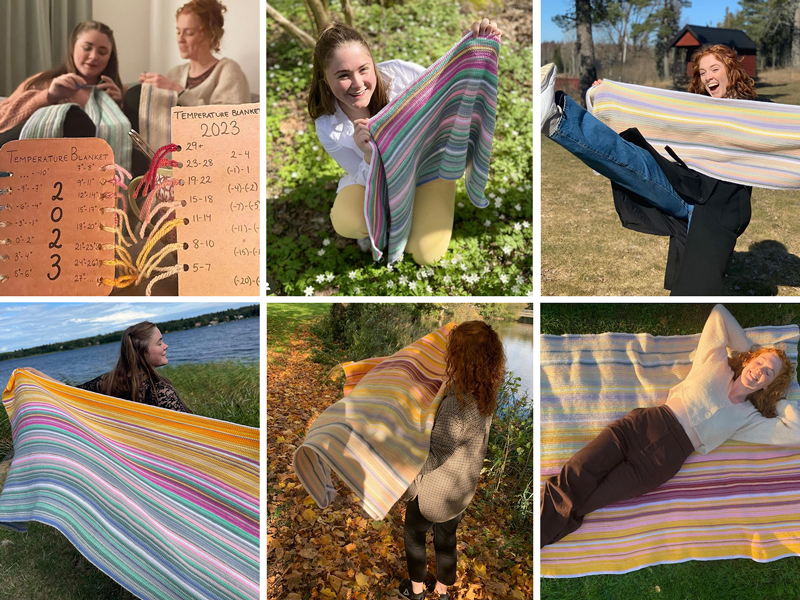
Need inspiration for your temperature blanket? Check out the Instagram profile @temperatureblanket.2023, where Emily and Nathalie shared their journey with temperature blanket projects throughout 2023. Dive in to witness the evolution of their creations over the year. 🫶 Here at the yarn office, we've completely fallen for their stunning projects! WOW! 😍
📸 Photos from @temperatureblanket.2023. Psst! Emily has now moved to her new profile @emmy_knits!
What You Need
- Your preferred yarn type.
- A crochet hook that matches the thickness of your yarn.
- Scissors and a needle.
- A weather app.
Choose Your Yarn
Have you decided to crochet a temperature blanket? How exciting!
The first thing you need to consider is the type of yarn you want to crochet with. Pick your favorite yarn type - that way, you’ll be sure that you’re going to love snuggling up with your new blanket.
If you prefer, e.g., an allergy-friendly acrylic yarn, you should consider one of our Amigo yarns made from HB acrylic or the light-as-a-feather Kind Feather.
If you want your future blanket to be extra warm, you might want to crochet it in a temperature-regulating wool yarn like our Friends Extra Fine Merino or Friends Wool.
You could also choose to go with our Friends Cotton yarns, made from 100% cotton, or perhaps Rainbow Bamboo, made from a breathable mix of cotton and viscose made from bamboo.
Tip! You should consider picking a yarn that comes in a wide range of colors to make it easier for you to put together a nice and nuanced color palette.
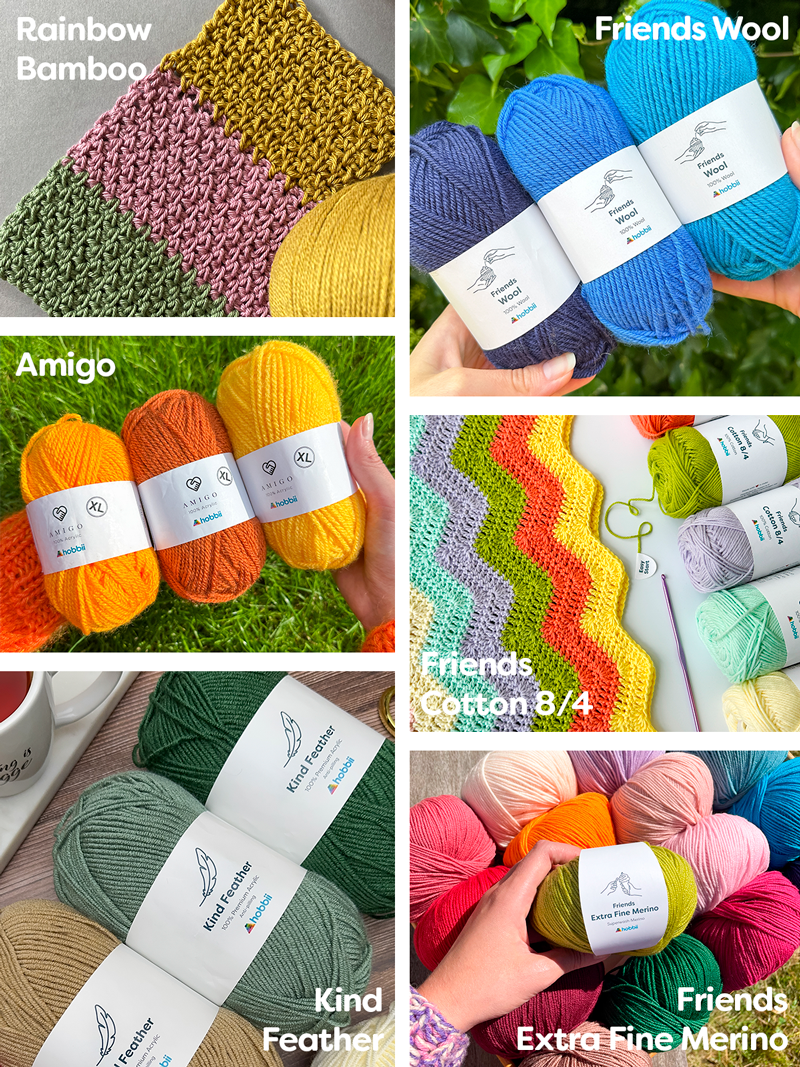
How Much Yarn Do I Need?
It can be hard to gauge the amount of yarn you need for your blanket. But you should keep several things in mind: How many colors do you want to include in your color scale? How thick is the yarn you picked? What types of stitches do you want to use in your design?
Once you’ve answered these questions, you can try to calculate the amount of yarn you will need in each color. You have to consider whether you want to be absolutely sure that you have enough yarn in each color from the start or whether you want to buy more yarn as you go along and (possibly) start to run out of individual colors.
Tip! Please note that the colors may vary slightly if you buy yarns from different dye batches. Read more about dyes and LOT numbers here.
As we all know, it is impossible to predict the weather an entire year in advance, but you can use the temperatures from previous years as guides when calculating your yarn needs.
Picking a Color Palette
So far, so good! It’s time to dive into the first stage of the creative work: you must put together a color palette for your blanket. You do this by picking out a minimum of 8-10 colors in your chosen yarn and creating a chart with a specific temperature range for each color. For example, it could look like this:
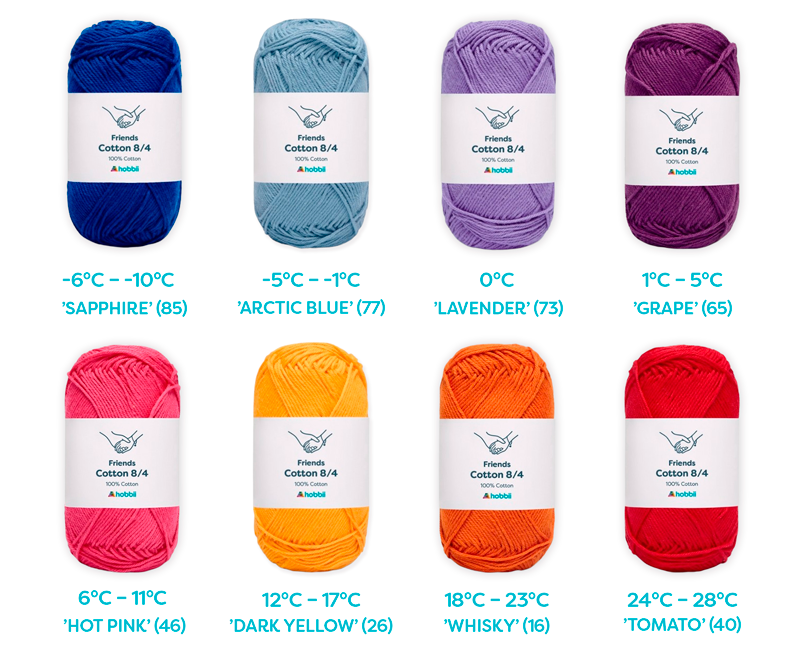
You would typically put together a color scale with light blue and purple colors for the lower temperatures, which gradually turn into orange and red colors at higher temperatures. Think about what colors might end up next to each other. Ask yourself this question: How much does the temperature usually vary from day to day or from week to week where you live? That way, you avoid unharmonious colors ending up next to each other.
You should also consider whether you want your colors to reflect the temperatures as closely as possible, with colder temperatures being blue and warmer temperatures being red. Or is your heart leading you in a different direction entirely? At the end of this journey, you are going to end up with an amazing blanket, and it would be a shame if you spent countless hours on it and hated the colors! Think about a range of colors that would look good in your living room.
TL Yarn Crafts helps you pick harmonious colors: 5 tips for picking perfect color palettes
Choose a Design or Get Inspired by a Pattern
Once you’ve picked out your colors, you must choose a pattern. The simplest way to go about it is to crochet your blanket row by row following a simple pattern like granny stripes. And from there, the process is quite simple: Crochet a new row every day reflecting the temperature of that particular day.
You could also go with a zigzag design or smaller granny squares. However, if you choose this format, you need to consider whether the blanket will be too long, making daily rows. Instead, consider doing a certain number of rows per week.
Want to follow a pattern? Find one here!
You could also create your own design using several different techniques to make the work a little less repetitive.
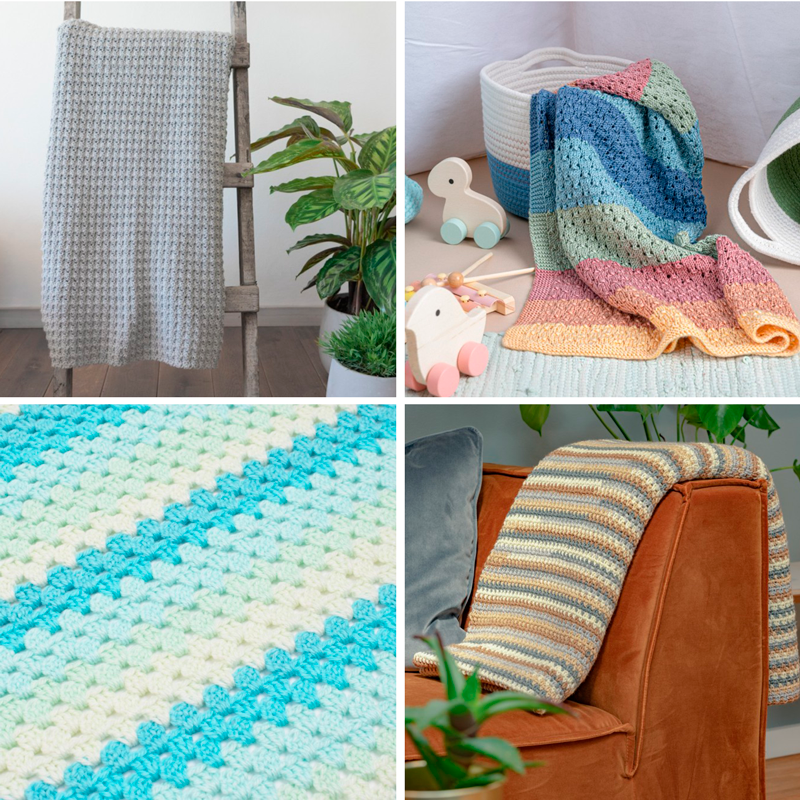
Use a Weather App
It’s time to start your temperature blanket! But how do you go about measuring the temperatures?
You can find the daily temperature in a weather app or online - or you can measure them yourself in your garden if you have the proper equipment. From there, it’s simple - just use the average temperature of the day (or the week if you choose to work on a weekly basis).
Make a Personal Temperature Blanket
You’re in charge of your temperature blanket. This blog post is only meant to inspire you. Feel free to freestyle as much as you want.
You could base your work on a specific year that has a special place in your heart. How cute would it be to make a blanket reflecting the temperatures of the year your child or grandchild was born? Or perhaps the year you met your partner or the year you got married?
Tip! With a quick Google search, you can easily find the temperatures of previous years.
You could also base your work on something other than the weather. You can use it to track any kind of data you want! How about a mood blanket?
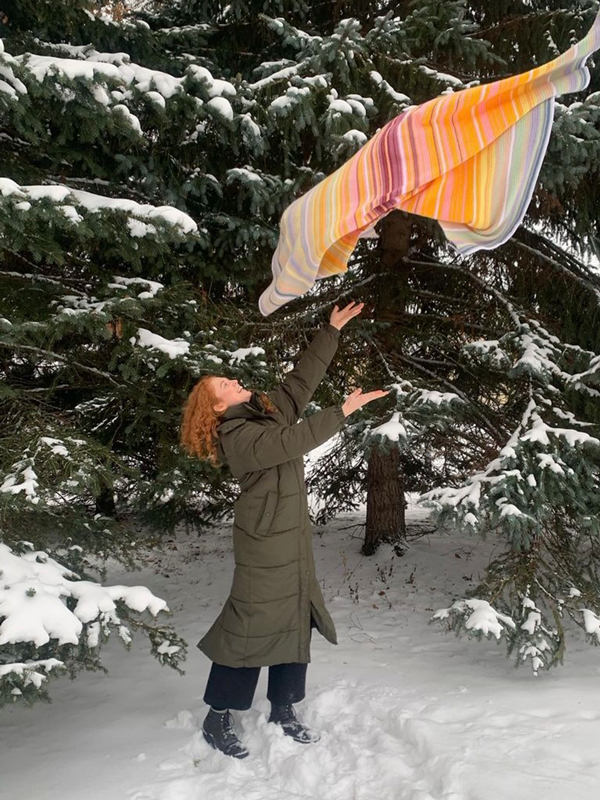
📸 @temperatureblanket.2023 / @emmy_knits.
Tips for your temperature blanket
- Create a system. It can be really helpful to lock in the color scale, the design, and the number of rows per day/ week from the get-go. Then all you have to do is follow the ‘rules’.
- Expect the unexpected. You can’t control the weather, and your blanket will inevitably unfold in its own unique way. And isn’t that incredible? Your blanket will be an accurate representation of the temperature at your exact location - and it won’t look like any other blanket made by anyone else.
- Don’t stress. This is supposed to be a cozy, year-long project, so don’t stress out about falling behind (or running out of a specific color). Just remember to jot down the temperature and pick the project back up again when you can.
Do You Prefer Smaller Projects?
If crocheting a blanket seems like an overwhelmingly large and slow project, you can use the same approach on a smaller project. How about making a shawl or a scarf?
Good luck with your upcoming project! ❤️
